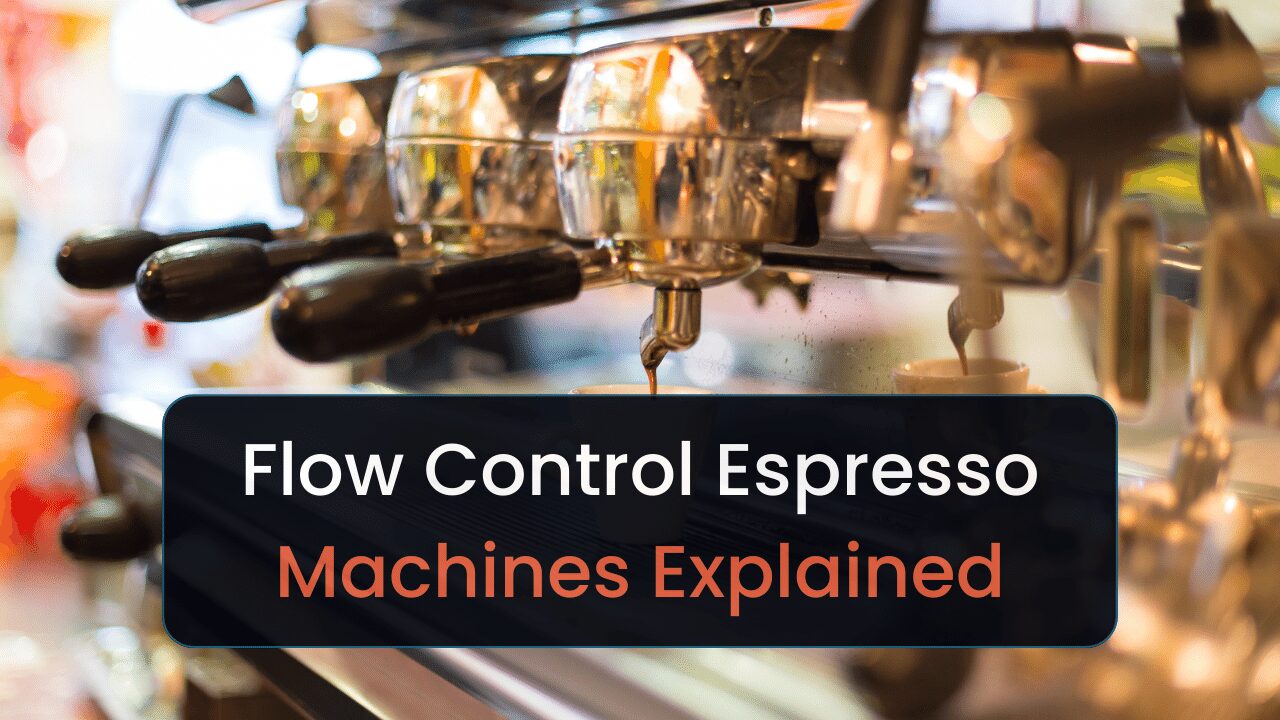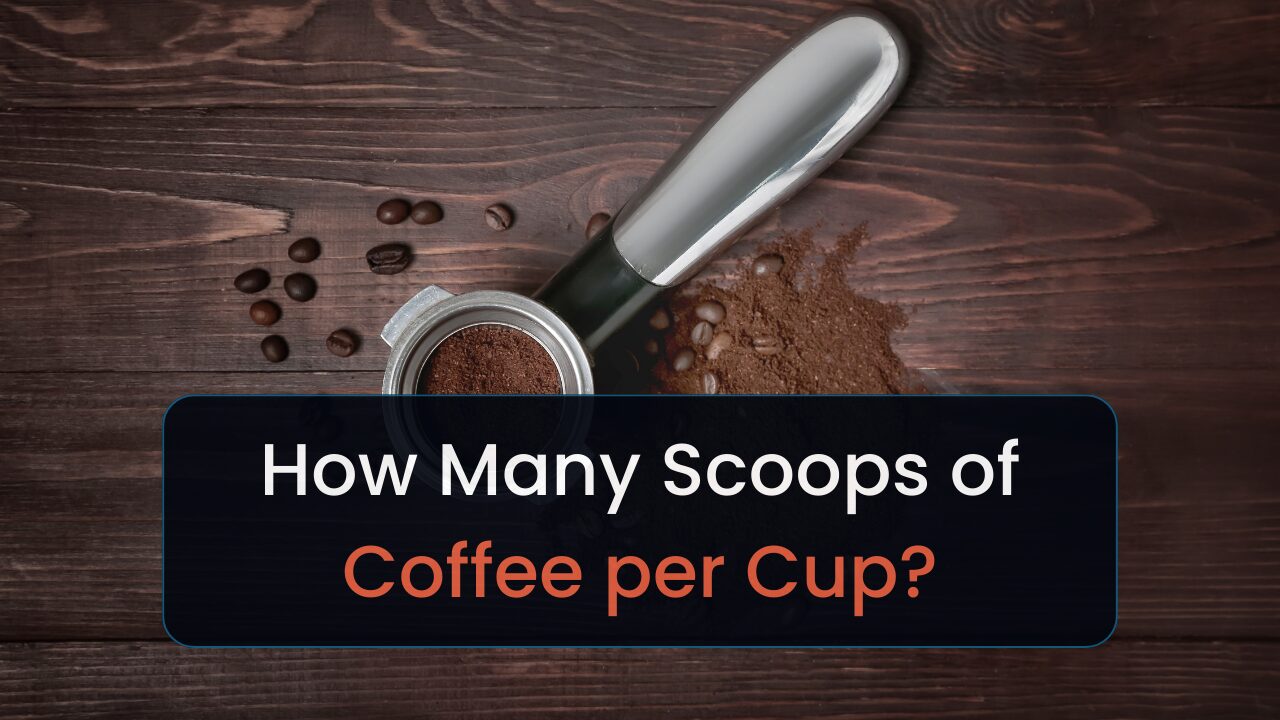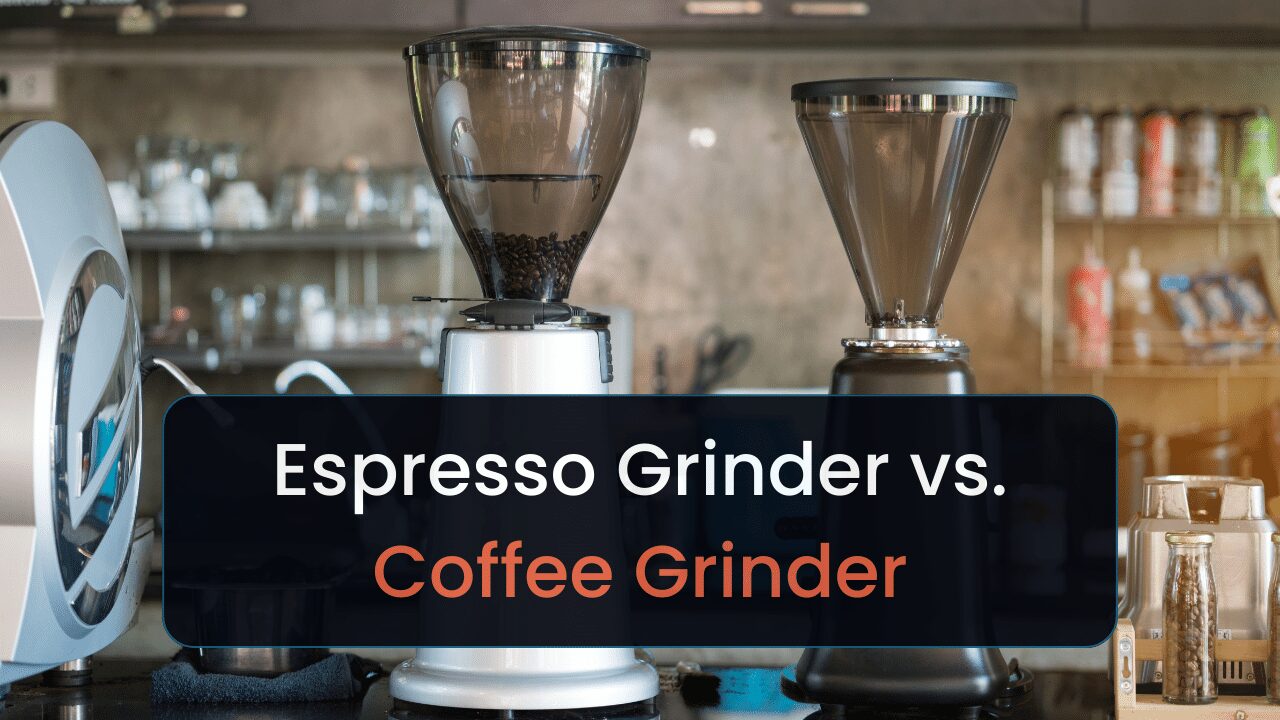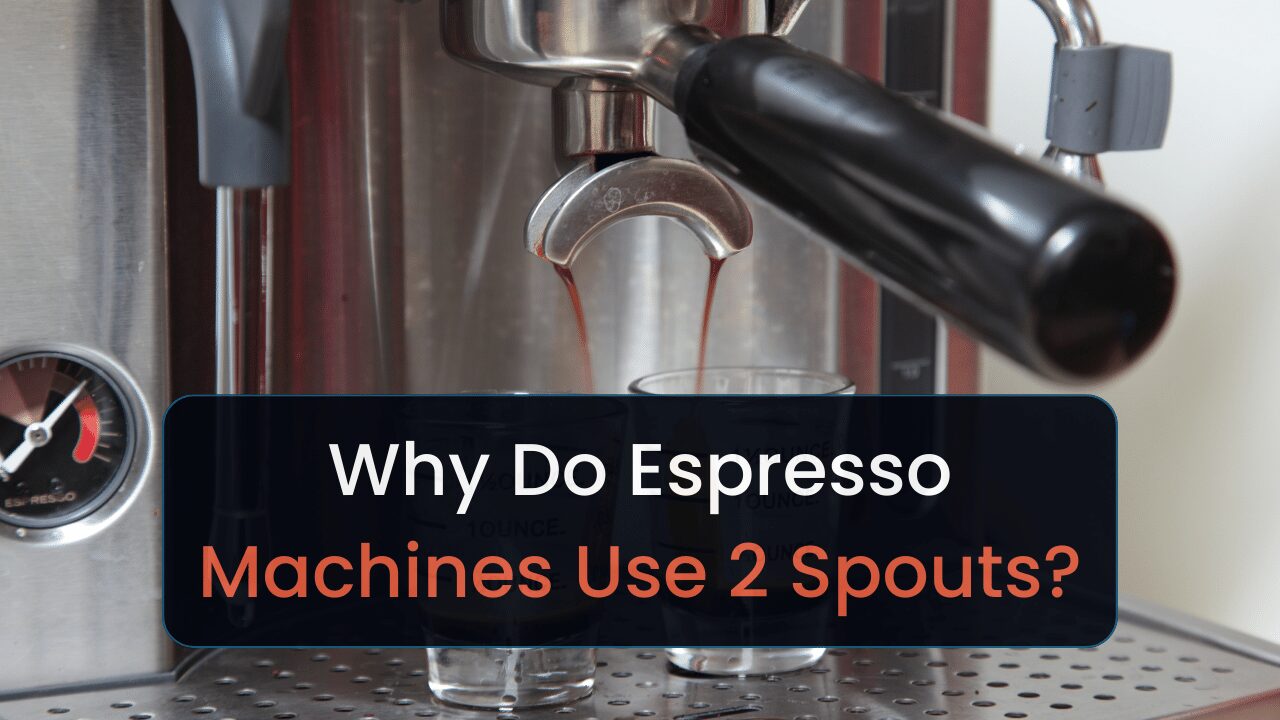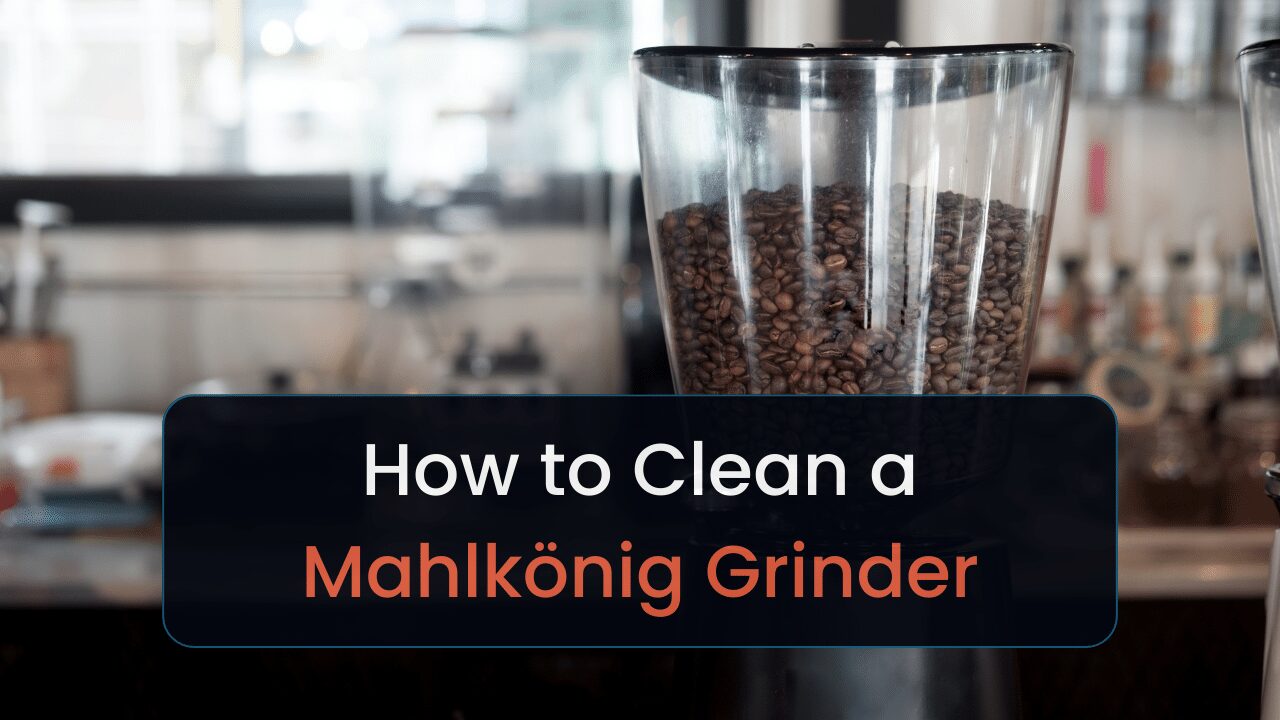I’ve experimented with many types of coffee makers and have found they’ve all made a difference in coffee drink taste. I want to help you learn about some of those differences.
I’ll cover these points in this guide:
Let’s find you a new coffee maker.
15 Types of Coffee Makers Compared
Before proceeding, let’s compare all the different types of coffee makers:
| Coffee Maker Type | Best For | Recommended Grind |
| Capsule Maker | Time crunches | NA |
| Percolator | Bold tasting coffee | Coarse |
| Thermal | Keeping coffee hot for hours | Medium-coarse |
| Grind & Brew | Not much counter space | Medium-coarse |
| Siphon | Enthusiasts | Medium-coarse |
| Espresso | More drink options | Very fine |
| Drip Coffee | Multiple coffee drinkers in households | Medium-coarse |
| French press | Beginners | Coarse |
| Pour-Over | Camping | Medium-fine |
| AeroPress | International travel | Medium-Coarse |
| Cold Brew Maker | Less acidic drink | Coarse |
| Stove top | High degree of drink customization | Medium-fine |
| Phin | Portability & making Vietnamese coffee | Medium-coarse |
| Costa Rica Chorreador | Rich taste without single-use filter | Medium-fine |
| Clever Dripper | Alternative to French press | Medium-coarse |
Different types of home coffee makers compared.
Electric Coffee Makers Compared
Electric coffee makers require electricity to work, but automate coffee making (for the most part). Devices like capsule coffee makers only need you to clamp a pod in the machine and press a button.
Then you magically have a cup of coffee.
Other devices, like the drip coffee maker, require oversight to avoid burning your brew.
1. Capsule/Pod Coffee Maker
Pros:
- Brews in under a couple of minutes
- Offers various drinks
Cons:
- Capsules cost a lot
- Not the most eco-friendly option due to single-use pods
Who it’s best for: those with a lot of disposable income and not much time in the day
A capsule coffee maker, or pod coffee maker, is an automated device that uses pre-packaged coffee capsules or pods to brew coffee.
The user inserts the capsule into the machine, presses a button, and the machine pierces the capsule and brews the coffee automatically.
However:
There’s no universal coffee pod maker. Different brands have their own pods that won’t work with different capsules/pods. I’ll cover the differences in the following sections.
Types of Coffee Makers with Pods
Most of the capsule coffee makers I’ll cover operate the same. Toss in a cap, fill the reservoir with water, and press a button.
I’ll talk about what each machine can brew in addition to the pods they accept.
1. Keurig
Keurigs use K-Cups and Keurig 2.0 pods. Keurig 2.0 pods will work with older machines. But K-Cups won’t work with 2.0 machines [1]. And not all K-Cups are the same. They come in different sizes like mini, original, and XL.
How is Keurig different from other machines?
Instead of just coffee, they brew tea, hot chocolate, and more. But they can’t brew espresso.
2. Nespresso
Nespresso has a few different types of pod designs:
- Nespresso Vertuo: only fit in VurtuoLine machines
- Nespresso Original line: fits in Nespresso machines and;
- KitchenAid
- Wacacao
- Philips Barista
- L’OR
- Inissia
- Le Cube
- Maestria
- Creatista
- And more
You’ve likely seen Nescafe Dolce Gusto pods. They don’t fit in Nespresso coffee machines. Only Nescafe Dolce Gusto machines, Krups, and Breville Dolce Gusto. Because Nestle needs more ways to make money.
3. Bruvi
Bruvi differs from other capsule coffee makers because it uses a patented brewing technology for higher pressure and temperature control, resulting in better extraction and a more flavorful cup of coffee.
Their pods are more eco-friendly since they’re built with bio-enzymes that degrade plastic quicker [2]. Making it strain landfills less.
4. Lavazza A Modo Mio
Lavazza claims to contain “characteristics of real Italian espresso” with a machine that has the following specs:
- Brewing temperature: 90–96 °C
- 25–35 ml of coffee poured
- Up to 7.5 grams of coffee per capsule
And they use Lavazza A Modo Mio capsules. Pods that aren’t compatible in any other machine than Lavazza’s.
5. Vittoria Espressotoria
Vittoria capsules only work in Piccolo coffee capsule machines. They’re budget-friendly machines that don’t have any noteworthy features. Time to move on to different coffee makers.
2. Percolator Coffee Maker
Pros:
- Durable & rugged
Cons:
- A pain to clean because of multiple parts
Who it’s best for: those who prefer a strong, bold coffee cup with a classic brewing method
Best grind to use: coarse grind
A percolator coffee maker is a brewing device that cycles boiling water through a basket of ground coffee, using gravity to extract flavor and aroma. The resulting coffee can be strong and bold, with a distinctive flavor profile.
3. Thermal Coffee Maker
Pros:
- Carafe doesn’t get as hot as glass carafes
- Keeps your coffee hot for hours
Cons:
- It holds less coffee than glass carafes
- Challenging to clean due to narrow opening
- More expensive than drip makers
Who it’s best for: those who want to keep their coffee hot for hours without a warming plate or risking a burnt taste
Best grind to use: medium-coarse grind
A thermal coffee maker is a type of coffee maker that uses a thermal carafe to keep brewed coffee hot for an extended period. This contrasts to glass carafe coffee makers, which use a hot plate to keep the coffee warm.
4. Grind & Brew Coffee Maker
Pros:
- Grinds beans & brews coffee
Cons:
- Difficult to clean
- Requires frequent cleaning & maintenance
- Grinders frequently jam
Who it’s best for: anyone who wants drip coffee, but doesn’t want to buy an additional coffee bean grinder.
A Grind & Brew coffee maker is a coffee machine that automatically grinds coffee beans and brews them into a pot or carafe. This coffee maker is convenient for those who prefer freshly ground coffee without the hassle of manually grinding and brewing.
5. Siphon Coffee Maker
Pros:
- “Pure” & flavorful coffee
- A great showpiece to keep on counters
- Easy to clean
Cons:
- The glass chambers are fragile
Who it’s best for: enthusiasts who want a unique brewing experience and a clean, flavorful cup of coffee
Best grind to use: medium-coarse
A siphon coffee maker, also known as a vacuum or siphon coffee maker, uses two chambers and a vacuum to extract coffee with a pure and clean flavor profile.
6. Espresso Coffee Maker
Pros:
- Doubles as a machine to aerate (froth) milk
- Opens your world to tens of espresso-based drinks
Cons:
- Requires a learning curve
- Expensive
- Requires a lot of work
Who it’s best for: patient people who want more coffee drink options
Best grind to use: very fine (less coarse than sand)
An espresso coffee maker, also known as an espresso machine, is a device that brews coffee by forcing pressurized hot water through finely ground coffee beans.
7. Drip Coffee Maker
Pros:
- Available in many styles
- Affordable
- Easy to use
- Reliable (depending on brand)
Cons:
- Warming plate can burn your coffee
- Not as much control over your coffee’s taste as with other machines
Who it’s best for: households with multiple coffee drinkers, as they can make large quantities of coffee at once
Best grind to use: medium-coarse grind
A drip coffee maker is a coffee brewing device that uses gravity to slowly drip hot water through ground coffee beans, extracting their flavor and aroma.
Manual Coffee Makers Compared
Manual coffee makers involve infusing coffee beans with water through hardware like French presses. Or use a Turkish Cezve to boil water mixed with finely ground coffee over a stovetop.
The latter does require an external appliance (stovetop). But you have the choice of gas- or electric stove tops.
Manual coffee makers take longer to brew drinks—up to 24 hours—but give you more control of their flavor and acidity. They’re also easier to clean, for the most part. No decalcifying or descaling is required.
But these coffee makers aren’t for those who don’t have much time in their days. Use them whether you have extra time to brew a better cup of rocket fuel, or when traveling and camping.
8. French Press
Pros:
- Prevents over-extraction from beans
Cons:
- Low-quality glass presses break easily
- Coffee doesn’t stay hot long
- A bit difficult to clean
- Should preheat carafe to maintain coffee temperatures
Who it’s best for: beginners of manually making coffee
Best grind to use: coarse grind
A French press coffee maker—press pot or plunger pot—is used to manually brew coffee by steeping coarsely ground coffee beans in hot water. After which, you’d press a plunger down to separate the brewed coffee from the grounds.
9. Pour-Over Coffee Maker
Pros:
- No need to worry about moving parts (less cleaning & maintenance)
- Only requires hot water & filter
Cons:
- Takes longer to brew coffee
Who it’s best for: best for 1 person who’s traveling
Best grind to use: medium-coarse grind
A pour-over coffee maker is a device used to manually brew coffee by pouring hot water over ground coffee beans held in a filter. The water then drips through the coffee and filter, extracting the flavor and aroma of the coffee.
10. AeroPress Coffee Maker
Pros:
- Portable
- Not fragile
- Easy to clean
Cons:
- Plunging takes around 2 minutes in most cases
- You’re constantly heating plastic
Who it’s best for: traveling, camping, & vanlifers
Best grind to use: medium-fine grind
An AeroPress coffee maker is a compact device that uses air pressure to brew coffee by forcing hot water through ground coffee beans. It produces a smooth and rich cup of coffee with low acidity and minimal bitterness.
11. Cold Brew Coffee Maker
Pros:
- Not as much acidity in coffee compared to other drinks
- Smooth taste
Cons:
- Requires more coffee than other methods
- Brewing takes more than 24 hours
- High-quality makers are fragile
Who it’s best for: anyone who wants less acidic and cold coffee
Best grind to use: coarse grind
A cold brew coffee maker is a device used to make cold brewed coffee by steeping coarsely ground coffee beans in cold water for an extended period, usually 12–24 hours.
The resulting coffee is smooth and less bitter than traditional hot brewed coffee, with a sweeter taste and lower acidity.
12. Stove top Coffee Maker
Pros:
- No filters required
- Similar taste to espresso
- Brews quick
- Easy to clean
Cons:
- Not as much caffeine
- Requires your full attention; to prevent scorching
- Requires a stovetop
Who it’s best for: anyone with extra time and wants a high degree of brew customization
Best grind to use: medium-fine grind
A stovetop coffee maker is a device used to brew coffee manually by heating water in a bottom chamber and allowing it to pass through a basket of ground coffee and into a top chamber.
This method produces a strong and bold cup of coffee with a rich and full-bodied flavor.
I want to cover a couple of popular stovetop coffee makers before we move forward.
1. Ibrik/Cezve
Best grind to use: extremely fine grind
A cezve coffee maker, also known as an ibrik, is a device used to manually brew coffee by boiling finely ground coffee beans in water and pouring the resulting coffee into a cup.
This method is popular in Middle Eastern and Turkish cultures and produces a robust and aromatic drink.
2. Moka Pot
Best grind to use: medium-fine grind
A Moka coffee maker is a device used to brew coffee manually by passing pressurized hot water through finely-ground coffee into a serving chamber.
This method produces a concentrated and strong coffee with a flavor profile similar to espresso.
13. Phin: Vietnamese Coffee Maker
Pros:
- Portable
- Easy to clean
Cons:
- Can brew a single cup at a time
- Brewing could take up to 5 minutes
Who it’s best for: campers and travelers due to its portability and durable parts
Best grind to use: medium grind
A Phin coffee maker is a Vietnamese-style device used to manually brew coffee by placing ground coffee in a small chamber and pouring hot water. The coffee then drips through a filter into a cup, producing a smooth and robust cup of coffee with a distinctive taste.
14. Costa Rican Chorreador
Pros:
- No filters required
- Can double as a decorative piece
Cons:
- Need to clean cloth filter in the washer
- Expensive if you want more than just the cloth filter (the wood)
Who it’s best for: anyone who wants to brew rich-tasting coffee without a single-use filter
Best grind to use: medium fine grind
A Costa Rican Chorreador coffee maker is a manual coffee brewing device that consists of a wooden stand holding a cloth filter over a ceramic or glass carafe. You’d pour hot water over the coffee grounds in the filter, which drip into the carafe.
This maker produces smooth and rich coffee.
15. Clever Dripper
Pros:
- Easy to use
- Portable
Cons:
- Not great for extracting oil from beans
- It’s plastic, which is susceptible to cracking & may affect drink taste
Who it’s best for: anyone who wants French press coffee without the fragile device.
Best grind to use: medium-coarse grind
The Clever Dripper is a manual coffee brewing device combining pour-over and French press brewing methods.
It uses a paper filter and immersion brewing to produce a full-bodied and flavorful cup of coffee with a clean finish.
What Should I Consider When Buying a Coffee Maker?
Consider the following factors when buying a coffee maker:
- Amount of time in your day: how much time do you have to brew coffee?
- Long-term costs: capsule costs, filters, electricity costs, & more
- Brewing temperature: ensure your machine can brew 196–205 °F (ideal brewing temperature)
- Special features: e.g., automatic start-up & shut down
- Portability: whether you could take it traveling
- Cleaning & maintenance: consider how long it’ll take to clean and maintain it
- Brew size: does it brew enough cups to meet your (and guests’) needs
- Cost: buy what’s within your budget
Consider all the above factors and your lifestyle to determine the coffee maker you’ll get. In a hurry all the time, yet like to toss around money for fun? Get a capsule maker.
Are you someone who lives in a van? Get an AeroPress, Phin, or French press.
I can’t make an overall recommendation since I don’t know you.
Drip makers may serve as a great machine to start with. They’re affordable and easy to use. More than 41% of folks in the United States—as of 2020— use one [3]. In 2010, supposedly 77% of the country used them.
FAQs
Keep reading to find frequently asked questions about the various types of coffee makers.
How Many Types of Coffee Makers Are There?
There are more than 15 types of coffee makers to choose from.
Are There Any Eco-Friendly Coffee Maker Options Available?
Many consider a high-quality French press coffee maker as an eco-friendly coffee maker. Since it doesn’t use electricity nor require filters.
How Long Does a Coffee Maker Typically Last?
High-quality drip coffee makers tend to last at least 5 years. The duration other coffee makers will last will vary by quality and how you treat your machine.
How Do I Choose the Right Coffee Maker for Me?
Pick the right coffee maker by matching the pros of various coffee makers to your lifestyle. For instance, if you never have time to brew coffee, get a capsule coffee maker.
Conclusion
I covered most popular electric and coffee makers. Each maker suits different needs and lifestyles. A Clever Dripper would work better for travelers. While a drip coffee maker would prove to be an ideal solution for multiple roommates who want to drink coffee.
Which coffee maker is the best, though?
It would take me too long to explain that information here. You’ll need to check out another piece I wrote that compares the best coffee makers.

